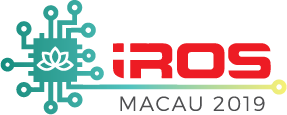Aerial Swarms | IROS 2019

The list of contributions to the workshop can be found here.
Context
Recent advances in sensor technologies have greatly enhanced the capabilities of unmanned aerial vehicles (UAVs). One consequence of this has been the growing interest in multi-aerial robotic systems often simply called "aerial swarms". The interest in single aerial robotic systems is still bustling and attracting many researchers worldwide. However, in the last decades, aerial swarm robotics consolidated itself as one of the most challenging, exciting and multidisciplinary fields of robotics. These systems have many advantages with respect to single-robot systems. In particular, aerial swarms have the possibility of fulfilling more complex tasks faster, and they are expected to be more robust to failures. Another advantage is that it is possible to share capabilities over the group (e.g., one part of the group is the eyes of the group, one part is the hands of the group). Real-world applications that could benefit from the use of aerial swarms include patrolling, exploration, search and rescue in large areas, as well as cooperative transportation and construction.
Workshop Goals
This workshop will bring together the subsets of the two communities of multi-robot and bio-inspired swarms dealing specifically with systems of multiple aerial robots. The workshop aims to trigger a scientific discussion on the most recent advances and challenges of the science and technology of aerial swarms. We believe that the two aforementioned communities tackle remarkably similar problems but in different manners. The common problems they try to focus on and solve are the ones of perception, estimation, control, and navigation of groups of UAVs in different environments. The multi-robot community often wants to ensure a particular configuration and performance tackling, for example, the swarming problem with tools from algebraic graph theory. Some of the works assume that the robots know their absolute positions and many assume that a robot can communicate with other members of the group. The bio-inspired community tries to tackle the same problem taking inspiration purely from biological systems. Therefore, they usually assume neither communication nor knowledge of the absolute positions of the agents. However, this community seldom implements the devised algorithms on real robotics systems to verify their applicability in the real world.
In general, we believe that there is not a gap between the two communities, but this workshop will try to highlight the differences in their approaches. The goal will be to share knowledge and to understand the main directions towards which the two communities are heading.
When: November 4th, 2019
Where: The Venetian Macao, Macau, China
Workshop room: LG-R14Workshop time: 9am-6pm
Organizers
Dr. Fabrizio Schiano
Postdoctoral Researcher at the Swiss Federal Institute of Technology in Lausanne (EPFL)
Laboratory of Intelligent Systems (LIS) - EPFL, Switzerland
Prof. Dario Floreano
Professor at the Swiss Federal Institute of Technology in Lausanne (EPFL)
Laboratory of Intelligent Systems (LIS) - EPFL, Switzerland
Dr. Paolo Robuffo Giordano
Senior Scientist at the French National Center for Scientific Research (DR2 CNRS).
IRISA, INRIA Rennes Bretagne Atlantique, France.
This workshop is supported by
© 2019 EPFL, all rights reserved
